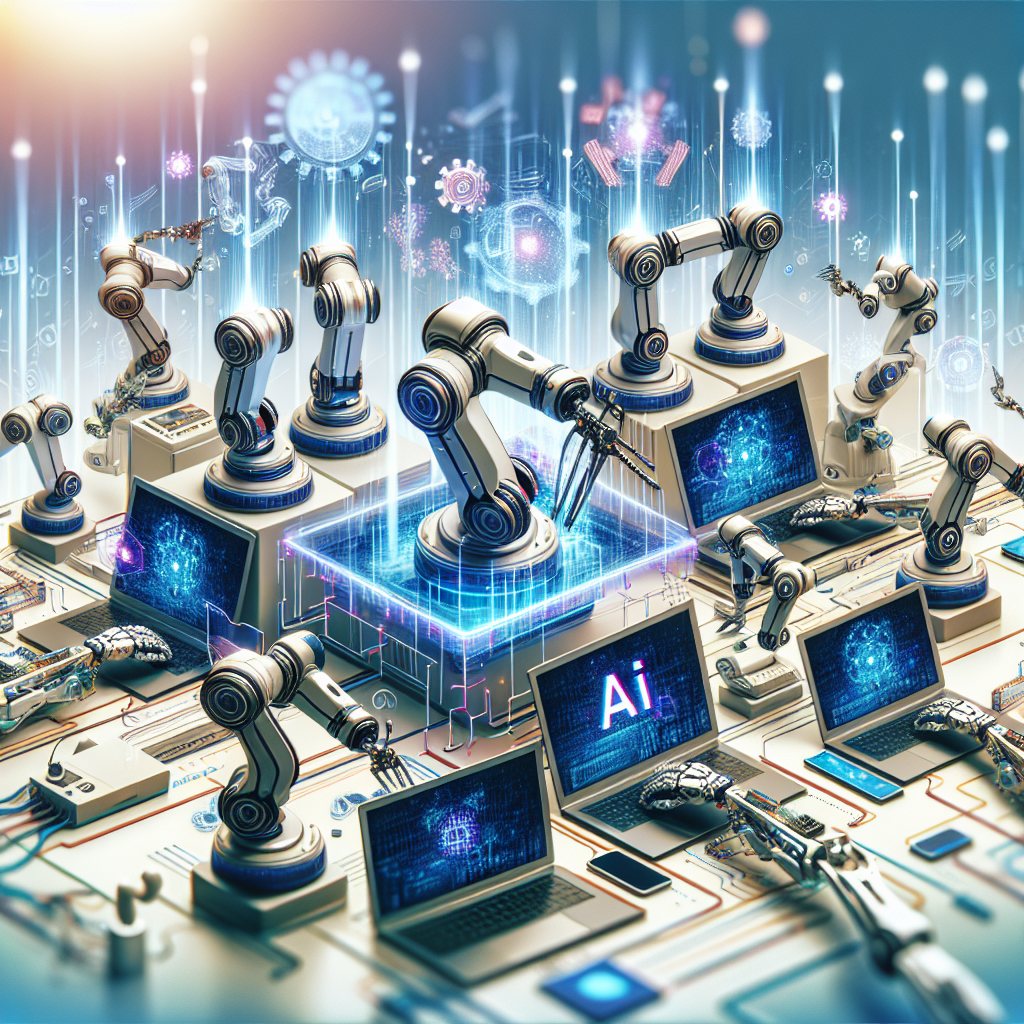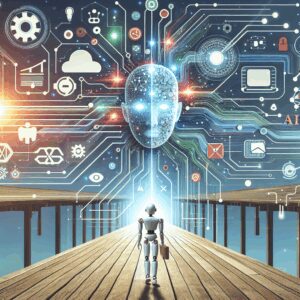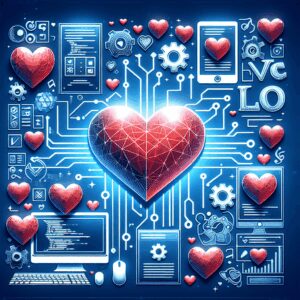The Future of AI Coding: Autonomous Teams and Self-Running Systems
In the rapidly evolving landscape of artificial intelligence, a groundbreaking development is reshaping the way we approach coding and software development. AI-powered coding assistants have been steadily improving, but a recent innovation promises to revolutionize the field entirely. This article delves into the exciting world of autonomous AI coding teams and self-running systems, exploring their potential impact on the tech industry and beyond.
As we journey through this technological frontier, we’ll uncover the key components driving this transformation, analyze its implications for businesses and developers, and peek into the future of AI-driven software creation. Whether you’re a seasoned programmer or a curious observer of tech trends, prepare to be amazed by the possibilities that lie ahead.
The Evolution of AI Coding Assistants
To fully appreciate the significance of the latest advancements, it’s *essential* to understand the evolution of AI coding assistants. The journey began with tools like Cursor, which essentially added AI features to existing integrated development environments (IDEs) like Visual Studio Code. This marked a *significant* step forward, allowing developers to leverage AI for code completion, bug detection, and even generating code snippets.
The next phase saw AI capabilities extended to the command line, bringing intelligent assistance directly to the terminal—a staple tool for many developers. This integration allowed for more seamless interaction between coders and AI helpers, streamlining workflows and boosting productivity.
Then came Claude Code, which represented a leap forward in AI coding capabilities. Claude Code demonstrated an unprecedented level of understanding of programming languages, project structures, and coding best practices. It could assist with complex tasks, offer explanations, and even engage in debugging sessions with developers.
“AI coding keeps getting better and better. But what if I told you that today I found something truly amazing? Something that makes Claude Code work all by itself. It creates a whole team. And this team doesn’t work one thing at a time. They all work together at the same time. The best part, you don’t need to monitor anything because it’s a truly autonomous system that just works.”
AI LABS
This quote from AI LABS encapsulates the excitement surrounding the latest breakthrough: an AI system capable of creating and managing an entire development team, working in parallel on multiple aspects of a project without human intervention.
The Power of Autonomous AI Teams
The concept of autonomous AI teams represents a paradigm shift in software development. Instead of a single AI assistant working on one task at a time, this new system creates a virtual team of AI agents, each specializing in different aspects of the development process. These agents collaborate seamlessly, much like a human development team, but with the added advantages of tireless operation and perfect synchronization.
This approach addresses one of the key challenges in software development: the need for diverse skills and simultaneous work on various components of a project. With an AI team, front-end development, back-end logic, database management, and even DevOps tasks can all progress in parallel, dramatically accelerating the development cycle.
“What we’re seeing with system is not just a trend, but a fundamental shift in how industries operate.”
Michael Thompson, Senior Industry Analyst at Global Business Insights
This shift is not just about speed; it’s about reimagining the entire software development process. The autonomous nature of these AI teams means that human developers can focus on high-level design, creative problem-solving, and strategic decisions, while the AI handles the implementation details.
Key Components of Self-Running Systems
At the heart of these autonomous AI coding teams are several *crucial* components that enable their seamless operation. One of the most *important* is the terminal multiplexer, or T-Mox.
“The first is T-Mox, which stands for terminal multiplexer. It’s a program that lets you create multiple terminal sessions inside one window. This is incredibly useful for maintaining context.”
AI LABS
T-Mox allows the AI system to manage multiple coding environments simultaneously, each dedicated to a specific aspect of the project. This capability is *essential* for maintaining context across different parts of the development process, ensuring that each AI agent has the necessary information and resources to perform its tasks effectively.
Another critical component is the advanced scheduling system. As highlighted by AI LABS:
“That’s the power of scheduling. It transforms your terminal into a self-running system.”
AI LABS
This scheduling capability allows the AI team to coordinate its efforts, allocate resources efficiently, and manage complex dependencies between different parts of the project. It’s what enables the system to operate autonomously, making decisions about task prioritization and resource allocation without human intervention.
Impact on Business and Development Practices
The introduction of autonomous AI coding teams is poised to have a profound impact on businesses and development practices. According to Business Analytics Quarterly, 73% of businesses implementing system strategies see improved performance within 6 months. This statistic underscores the potential for rapid, tangible benefits from adopting these advanced AI technologies.
Moreover, the efficiency gains are substantial. Enterprise Technology Survey 2024 reveals that companies utilizing claude technologies report 28% higher efficiency rates. This increased efficiency can translate into faster time-to-market for new products, reduced development costs, and the ability to tackle more complex projects with existing resources.
“The integration of your has become *essential* for companies looking to remain competitive in today’s market.”
Lisa Chen, Strategic Business Consultant at Innovation Partners LLC
This sentiment reflects the growing recognition that AI-driven development is not just a nice-to-have, but a critical competitive advantage in the fast-paced tech industry.
Challenges and Considerations
While the potential of autonomous AI coding teams is immense, it’s *important* to consider the challenges and potential drawbacks. One primary concern is the need for robust oversight and quality control mechanisms. Although the AI system operates autonomously, human expertise is still *crucial* for ensuring that the output meets business objectives and quality standards.
There are also considerations around data security and intellectual property. As AI systems become more involved in core development processes, companies must ensure that sensitive information and proprietary algorithms are adequately protected.
Additionally, the integration of these advanced AI systems into existing development workflows may require *significant* changes to organizational structures and processes. Companies will need to invest in training and adaptation to fully leverage the capabilities of autonomous AI teams.
Future Outlook and Market Trends
The future of AI coding looks exceptionally bright, with market trends indicating strong growth and increasing adoption. According to Industry Research Institute 2024, the claude market is expected to grow by 15.3% annually through 2025. This projected growth reflects the increasing recognition of AI’s value in software development.
Furthermore, Technology Trends Report 2024 indicates that your adoption has increased by 45% since 2023, signaling a rapid shift towards AI-driven development practices across industries.
“The future of claude lies in understanding the intersection of technology and human behavior.”
Dr. Sarah Mitchell, Technology Innovation Specialist at MIT Technology Review
This insight suggests that as AI coding systems become more sophisticated, the focus will shift towards optimizing the collaboration between human developers and AI teams, creating a symbiotic relationship that leverages the strengths of both.
Looking ahead, we can expect to see further innovations in AI coding capabilities, including more advanced natural language processing for code generation, improved AI-driven testing and debugging, and even AI systems capable of architectural design and system optimization.
Conclusion
The advent of autonomous AI coding teams and self-running systems marks a pivotal moment in the evolution of software development. By creating virtual teams of AI agents capable of working simultaneously on multiple aspects of a project, this technology promises to revolutionize the speed, efficiency, and scale at which software can be created.
As we’ve explored, the implications of this technology are far-reaching, affecting not just the day-to-day practices of developers but also the strategic decisions of businesses in the tech sector and beyond. With Market Research International projecting global spending on system solutions to reach $2.4 billion by 2025, it’s clear that this is more than just a passing trend.
For developers, business leaders, and technology enthusiasts alike, staying informed about these advancements and considering their potential applications will be *crucial* in the coming years. The future of coding is here, and it’s powered by AI teams that never sleep, never tire, and continuously push the boundaries of what’s possible in software development.





Leave a Reply